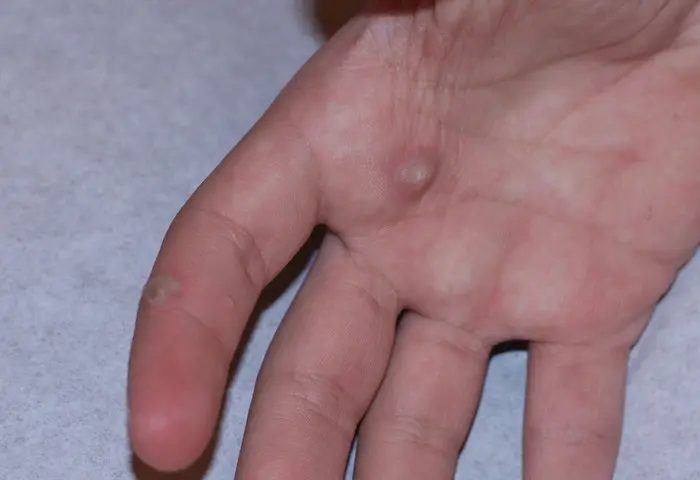What is a wart?
Warts are small and rough skin growths that can appear anywhere on the body. They are benign, not cancerous, but they are contagious simply by touching one, or touching something a wart has made contact with and wasn’t properly cleaned. Warts are caused by viruses that affect the top layer of skin. These viruses are known as human papillomavirus, or HPV. When you have contact with warts, especially when your skin is cut or damaged, you might become infected with HPV.
Signs and Symptoms
Warts come in all shapes and sizes. Most often, warts are skin-colored and feel rough, but they can also be darker brown or grey-black, flat, or smooth. There are a few different types of warts. The type is determined by what it looks like and where it is on the body. The signs of warts is what you can see while the symptoms is what you can feel. Common warts have these main traits:
- Mostly grows on the fingers, around the nails, and on the backs of hands.
- Appear where skin was broken, especially for people with habits of biting fingernails or picking at hangnails.
- Some warts appear to have black dots on them that look like seeds.
- Most often warts feel like rough bumps.
There are also:
- Planter warts that appear on the sole of your feet and are more painful.
- Flat warts are smaller and smoother and found on children a lot.
- Filiform warts look like long threads or thin fingers that stick out from the skin.
Because there are so many types of warts it’s important to come in and see us to help determine if they really are warts, what type they are, and how to treat them. More often than not, the doctor can tell if you have a wart just by looking at it. But there are times that a biopsy might have to be performed. You should especially see a dermatologist if the wart hurts, is on your face or genitals, there are many warts, or if you have a weak immune system or diabetes.
Causes
Warts appear most often on children, teens, nail biters, or someone with weakened immune systems. The reason children typically get warts more often than adults is because children are more likely to have scrapes and cuts on their hands or not be as thorough while hand washing. Warts can also spread in areas of the body where we shave, like beard area on men or legs on women.
We have treatment options
- Cryotherapy: For common warts in adults and older children, cryotherapy (freezing with liquid nitrogen) is the most common treatment. This treatment is not too painful. It can cause dark spots in people who have dark skin. It is common to need repeat treatments.
- Electrosurgery and curettage: Electrosurgery (burning) is a good treatment for common warts, filiform warts, and foot warts. Curettage involves scraping off (curetting) the wart with a sharp knife or small, spoon-shaped tool. These two procedures often are used together. Dr. Jochen may remove the wart by scraping it off before or after electrosurgery.
- Laser treatment: Laser treatment is an option, mainly for warts that have not responded to other therapies. Before laser treatment, the dermatologist may numb the wart with an anesthetic injection (shot).
- Medications: Topical medications such as Aldara may also be used to treat warts.
Sadly, there is no cure for the wart virus HPV. This means that once you have warts, they can reappear in the same spot, or a new spot, without warning. They can even spread as fast, or faster, than the old ones can be treated. This happens with contaminated skin cells flake off and spread to other parts of the body. It is very important to treat warts as quickly as possible, keep the areas as clean as possible, and to follow Dr. Jochen’s recommendatons.

















